Summary
-
Critical skills required for fixed-antenna VSAT field technicians and engineers, focusing on accurate antenna alignment and prevention of major sources of uplink interference.
Description
Improper installation technique is a major cause of interference, which degrades satellite transponder performance for all users. Developed in coordination with major satellite operators, GVF 510 teaches technicians the correct way to point an antenna, align cross pol, attach connectors, and decommission terminals – four leading causes of avoidable interference. As the first step towards GVF Satcom Professional Certification, GVF 510 teaches and evaluates the core skills that all VSAT field technicians must have – regardless of the type of equipment they install.
Includes advanced interactive 3-D simulations. Second edition: updated, includes new cross-pol and other simulators.
Prerequisites:
Basic knowledge of DC and RF theory. GVF 505 and 506 recommended.
Audience:
All installers, field technicians, and engineers who may be responsible for activating any type of VSAT terminal.
Delivery:
Animated & interactive HTML5, self-paced, on-line format. Requirements: internet access while studying the course material (high speed preferred ); current browser with JavaScript enabled; permission to access SatProf server and learning system websites; mouse.
Languages:
English only (limitation of HTML5 conversion).
Tests:
Each lesson contains a mandatory quiz and simulator-based skills assessments. All pages must be viewed and all quizzes and simulator tests must be passed in order to satisfactorily complete the course.
Certification:
Students who pass this course and the GVF Basic Hands On Skills Test will receive the GVF Basic Satcom Professional Certification. This course is also required as a pre-requisite for the GVF Advanced Satcom Professional certification and all GVF Satcom Professional Specialist certifications.
Reference materials included:
: GVF Quick Reference Sheet for satellite field technicians; extensive glossary.Lessons
- Course Introduction, includes review of GVF Certification requirements and aspects of interference prevention.
- VSAT Hardware, reviews key components found in all satellite terminals.
- Cables and Connectors, includes animated instruction on cable preparation, crimp and compression connector attachment, and a simulator skills test.
- Site Selection, includes 3-D interactive animations of latitude, longitude, and satellite orbits, and an interactive 3-D line of sight simulator.
- Polarization theory, with 3-D animation of polarization angles and interactive exercises in pre-setting feed rotation.
- Build the Terminal and Find the Satellite, includes tutorials in technique for rapidly finding the correct satellite, and practice on a full 3-D interactive VSAT antenna simulator with working signal meter.
- Accurate Pointing, includes tutorials and 3-D simulator practice of the beam balance method for preventing adjacent satellite interference, and a start-to-finish simulator for practice and skills test.
- Cross-pol alignment and activation, including calculating uplink IF frequencies and working with the satellite access center to perform a cross-pol alignment. Includes interactive cross-pol lineup exercise and skills test.
- Decommissioning and Equipment Faults, covers importance of maintaining VSAT network terminal records, interference caused by rebroadcast and retransmission from disconnected cables, interference from faulty hardware, and decommissioning checklist steps.
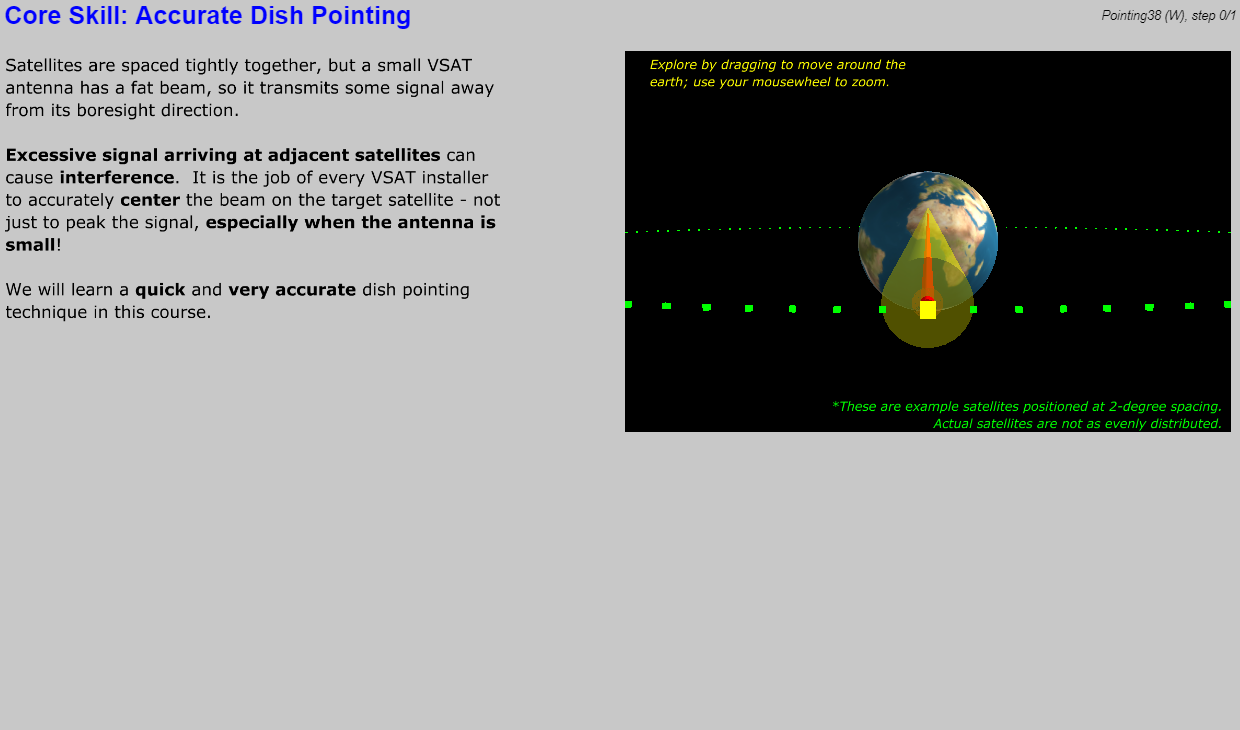
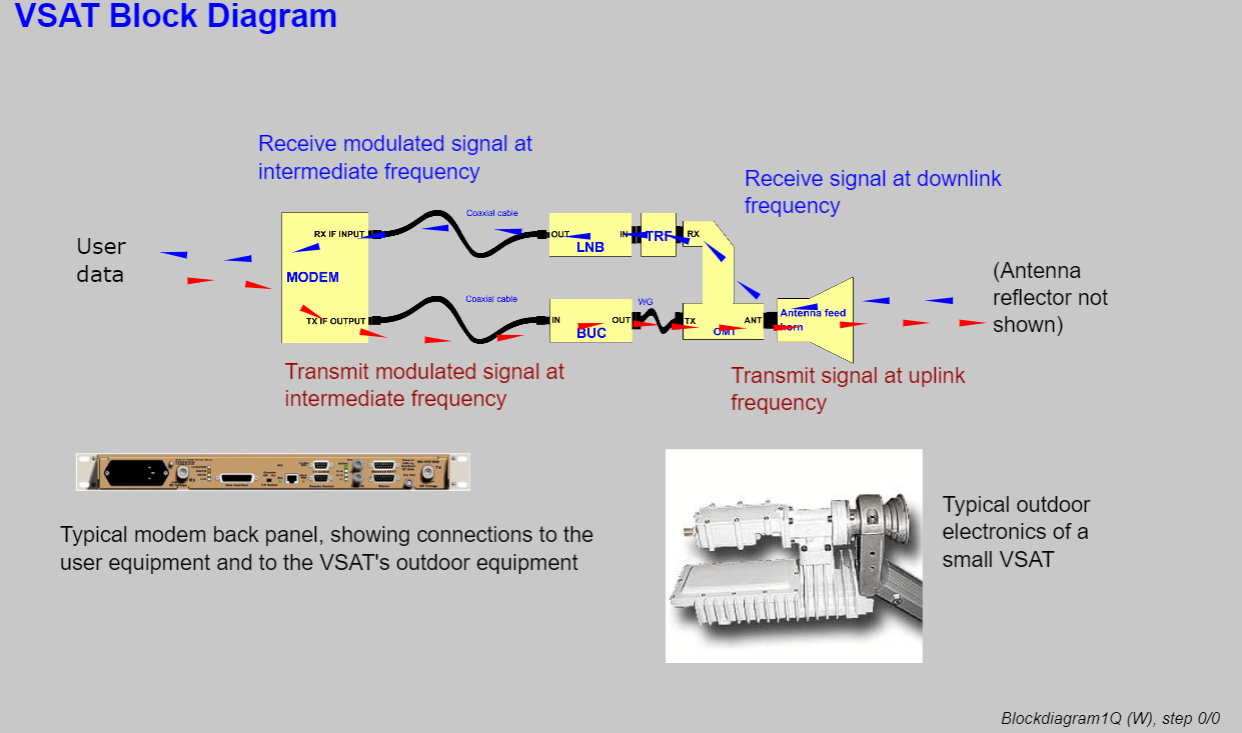
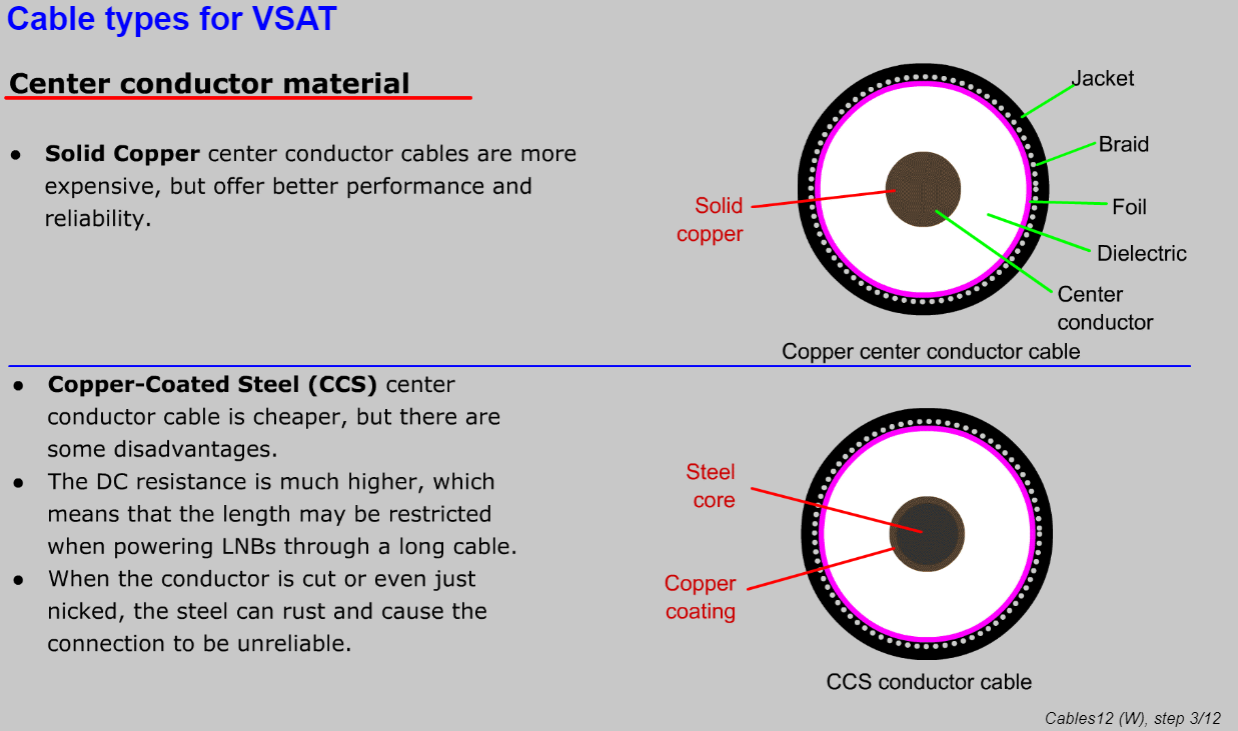
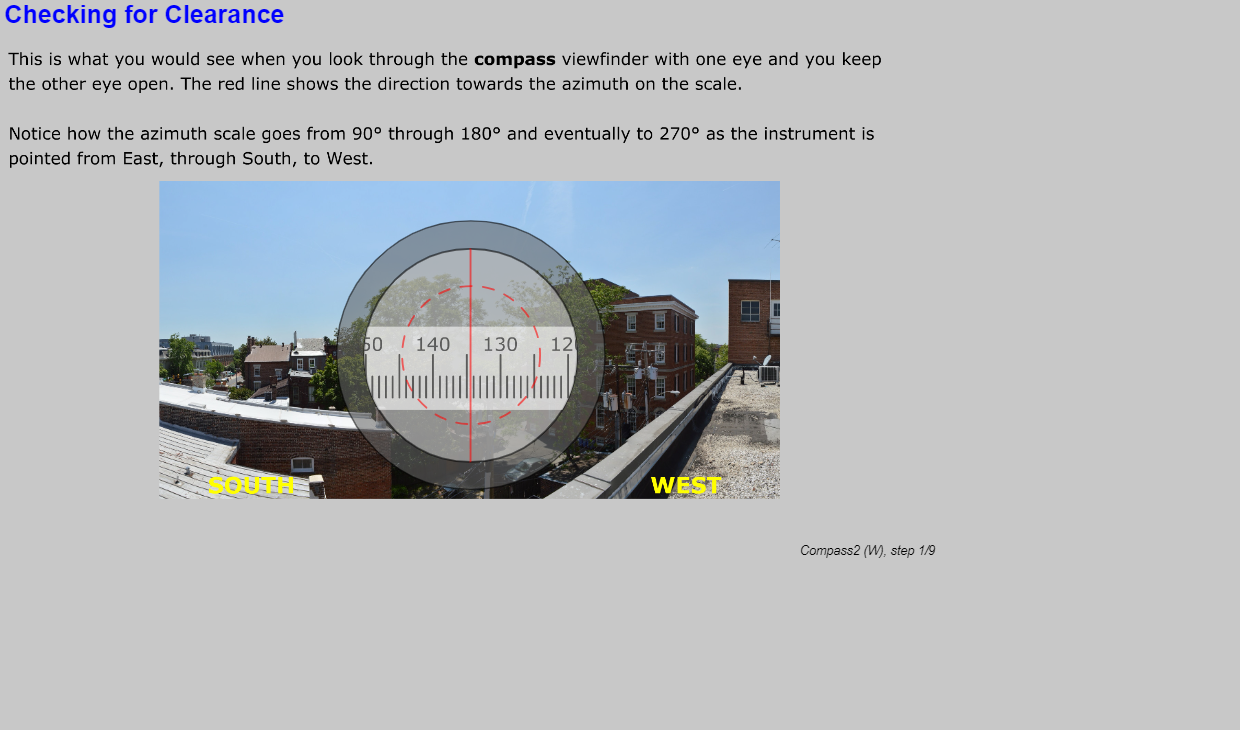
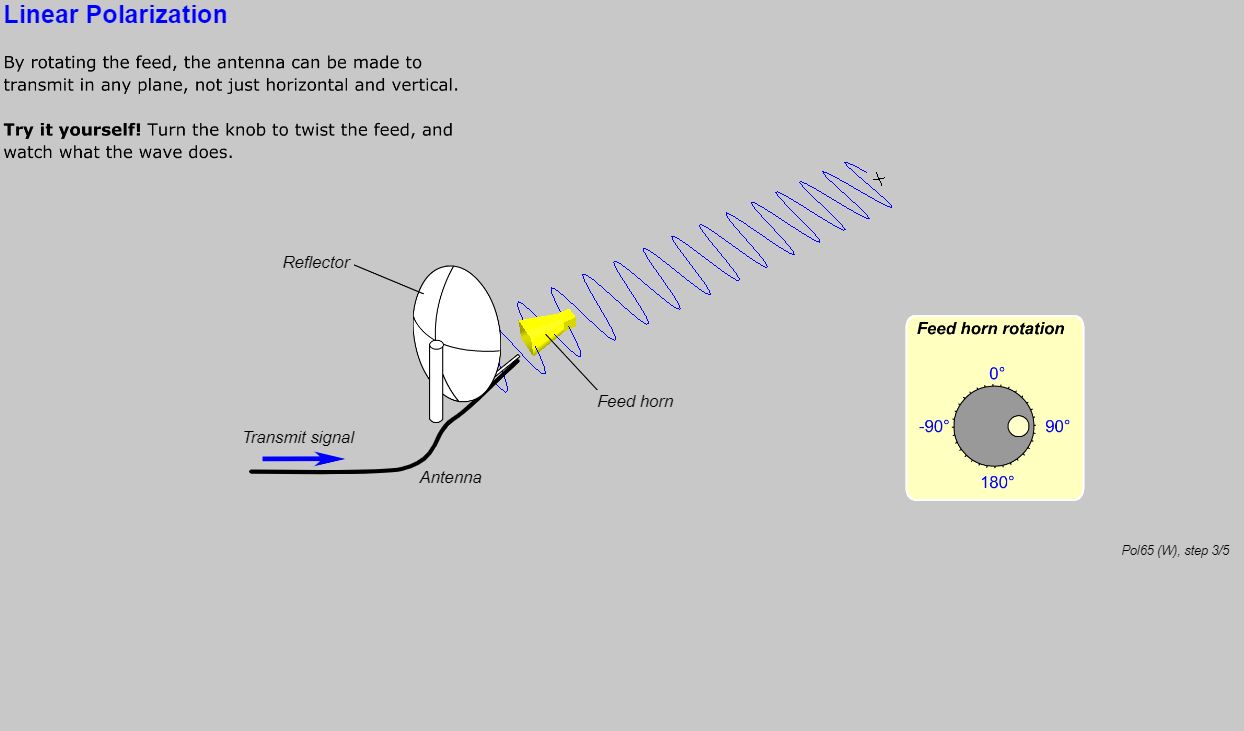
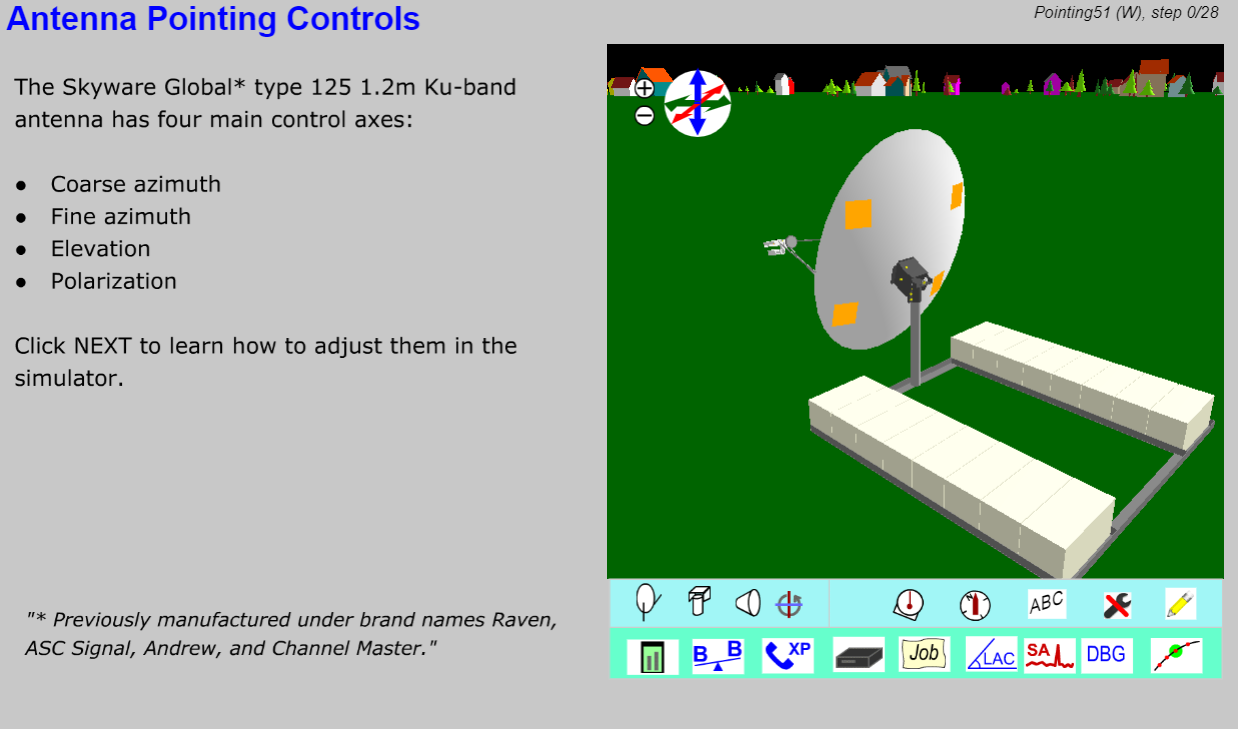
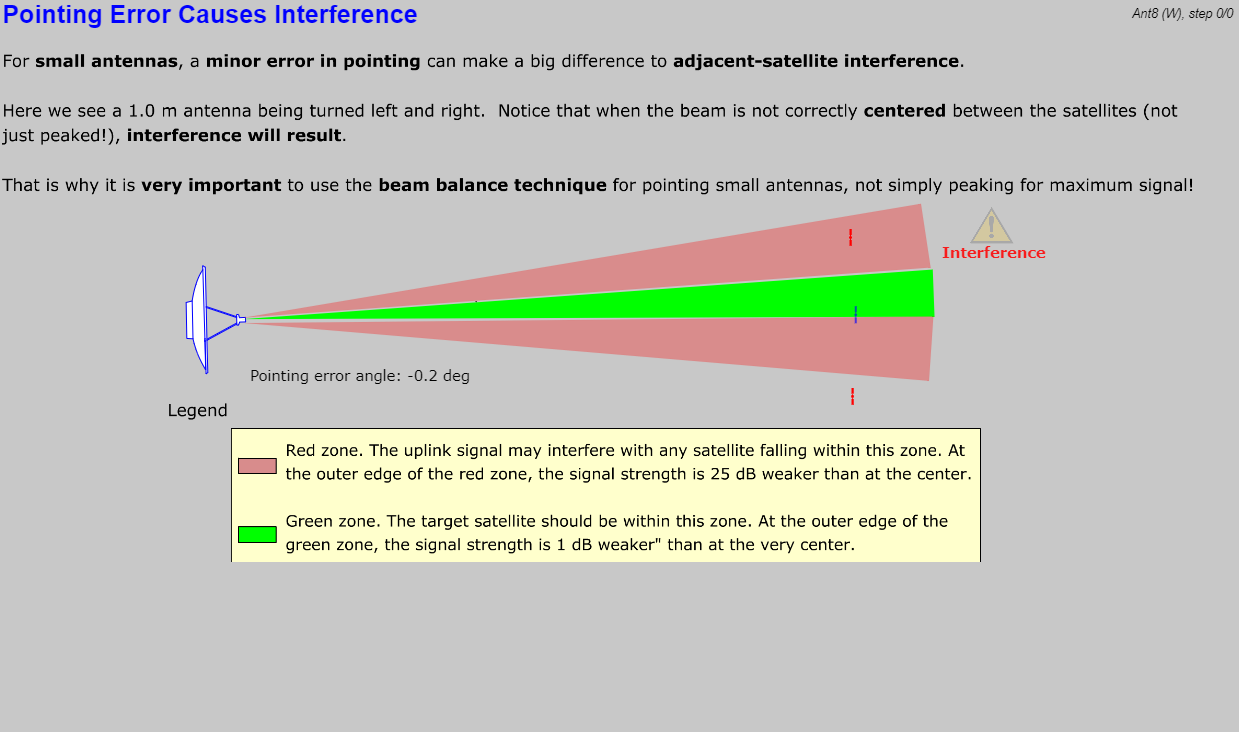
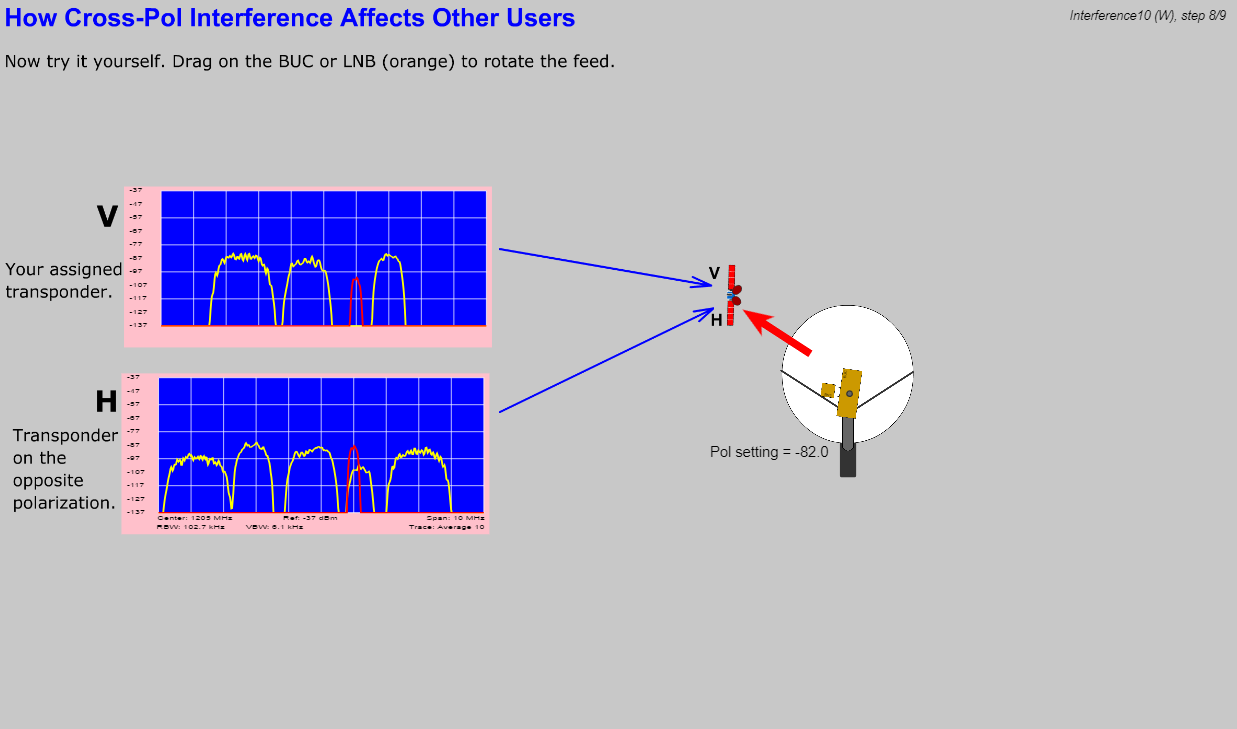
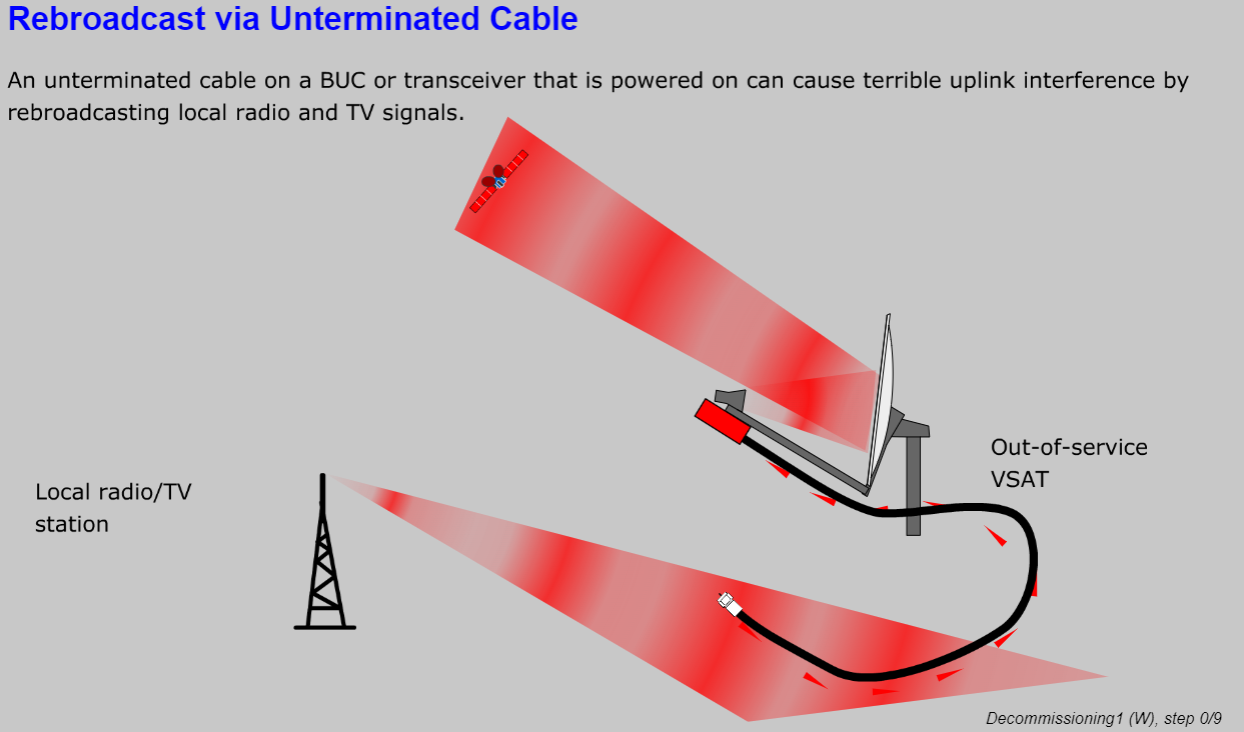
Learning Objectives
- Understand why an improper VSAT installation can cause interference in the satellite.
- Assemble a basic VSAT.
- Correctly attach an F connector on an RG-6 cable.
- Understand latitude, longitude, satellite position, azimuth, elevation, pol angle.
- Aim the antenna towards the approximate satellite position based on local lat, long, and satellite long.
- Preset feed pol angle. Find the correct satellite using a typical meter.
- Point a small antenna accurately enough to minimize adjacent satellite interference.
- Adjust feed pol angle for best cross pol using uplink test in coordination with the satellite access center.
- Correctly decommission a VSAT to prevent it from making interference.